
Enea Vico, Venus and Mars Embracing as Vulcan Works at His Forge, 1543. Courtesy of the Metropolitan Museum of Art.Almost immediately after the introduction of any major technological advancement, humans inevitably end up employing it for porn. “Sometimes the erotic has been a force driving technological innovation,” John Tierney penned in 1994, the early days of the World Wide Web, but “virtually always, from Stone Age sculpture to computer bulletin boards, it has been one of the first uses for a new medium.”

Agostino Caracci, Alcibiades and Glycera, from “I modi,” 16th century. Image via Wikimedia Commons.

Agostino Caracci, Hercules and Deianira, from “I modi,” 16th century. Image via Wikimedia Commons.Today, pornography is democratized. No longer confined to the pages of magazines, the internet has allowed anyone the means to upload their amateur videos to Pornhub or use Instagram as a marketing tool to tease their bits. Pornography is also crowdfunded. Instagram models lead you to Patreon pages or cam streams, where—for a low monthly subscription fee, or the occasional generous gift—there’s a glimmer of hope that the viewer could get to know them.In the West, the first step in bringing pornography to the broader public came unexpectedly, with the invention of Johannes Gutenberg’s printing press in 1440. The German publisher created the machine to share books—most notably, the vernacular Gutenberg Bible—with the masses. Soon, it was able to disseminate engraved images, too. Gutenberg’s press effectively opened the door for a flow of new images and ideas around Europe.

Marcantio Raimondi after Giulio Romano, engraving from “I modi,” 16th century. © The Trustees of the British Museum. Courtesy of the British Museum.AdvertisementSoon enough, explicit artworks were made readily accessible, and producing them became a public offense. “It was the transition from the highest rungs of society to a broader public that was the cause for concern among the private elite circles of humanists as well as Church clerics,” Andrea Herrera writes in The Renaissance Nude (2018), a catalogue accompanying a 2018–19 exhibition of the same name.Around the same time as the print revolution, artists revived the nude in painting as a callback to antiquity and as a way to humanize lofty saints. Prestigious and expensive painting commissions for explicit female nudes flourished in Europe during the Renaissance. Famous artists like Raphael and Botticelli created illicit works meant only for the eyes of elite men.

Marco Dente, Pan spying on the nymph Syrinx who is seated on a rock, combing her hair, ca. 1516–20. Courtesy of the Metropolitan Museum of Art.
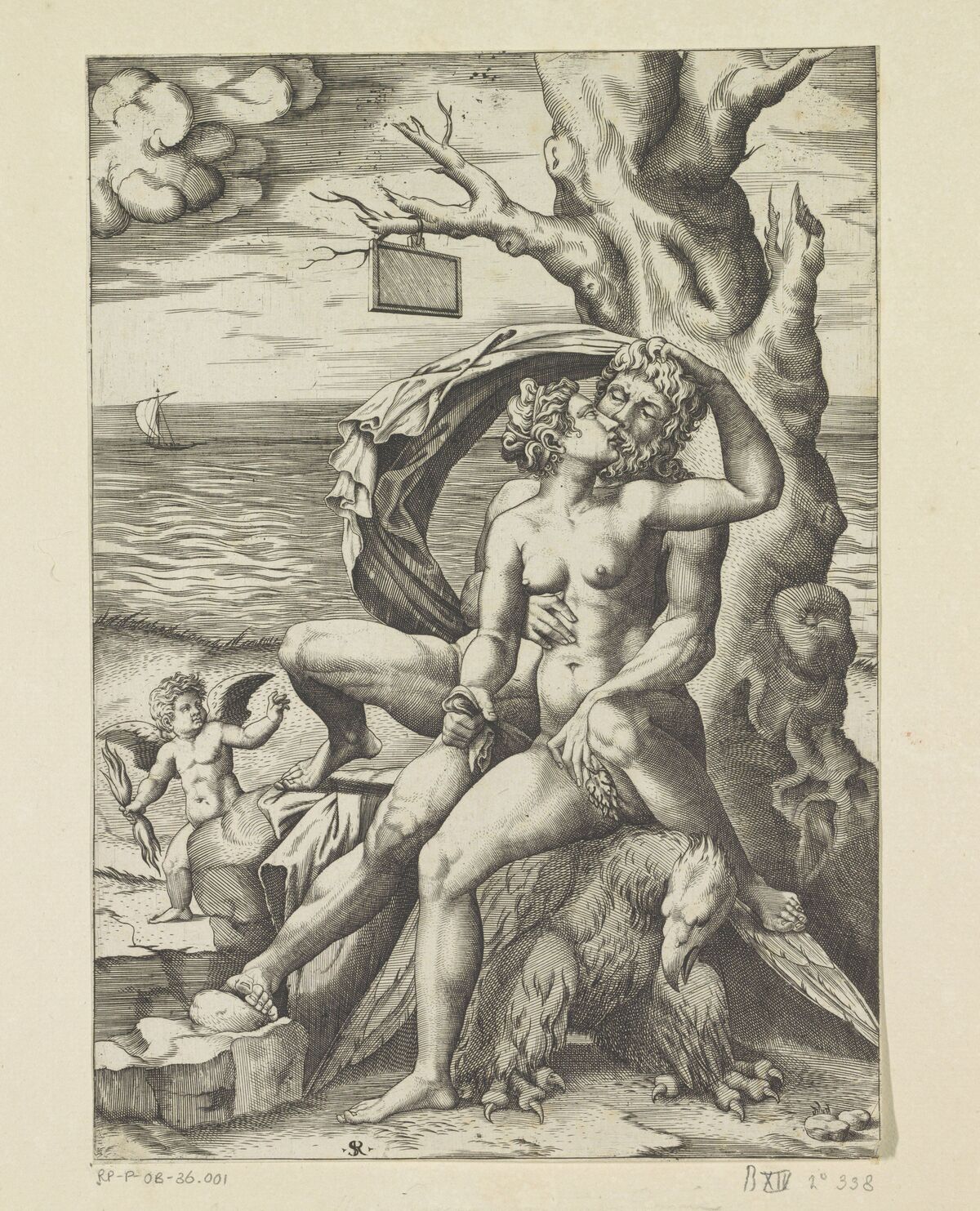
Marco Dente, after Giulio Romano, Jupiter and Semele, 1498–1532. Courtesy of the Rijksmuseum.Beyond erotic pleasure, such artworks had intellectual conceits. It became a performance for the upper echelon to view provocative, masterfully painted or sculpted nudes. “This ability to admire the skill behind the artwork rather than give in to bodily desire demonstrated the virtue of the viewer,” write Stephen J. Campbell, Jill Burke, and Thomas Kren in the introduction to The Renaissance Nude.Artists also looked to ancient texts like the Ovidian love stories, which were revived by the printing press and circulated around Europe, for sensual subjects. The Greeks and Romans had imagined their gods as sexual beings, and it became in vogue to do so again in the Renaissance.
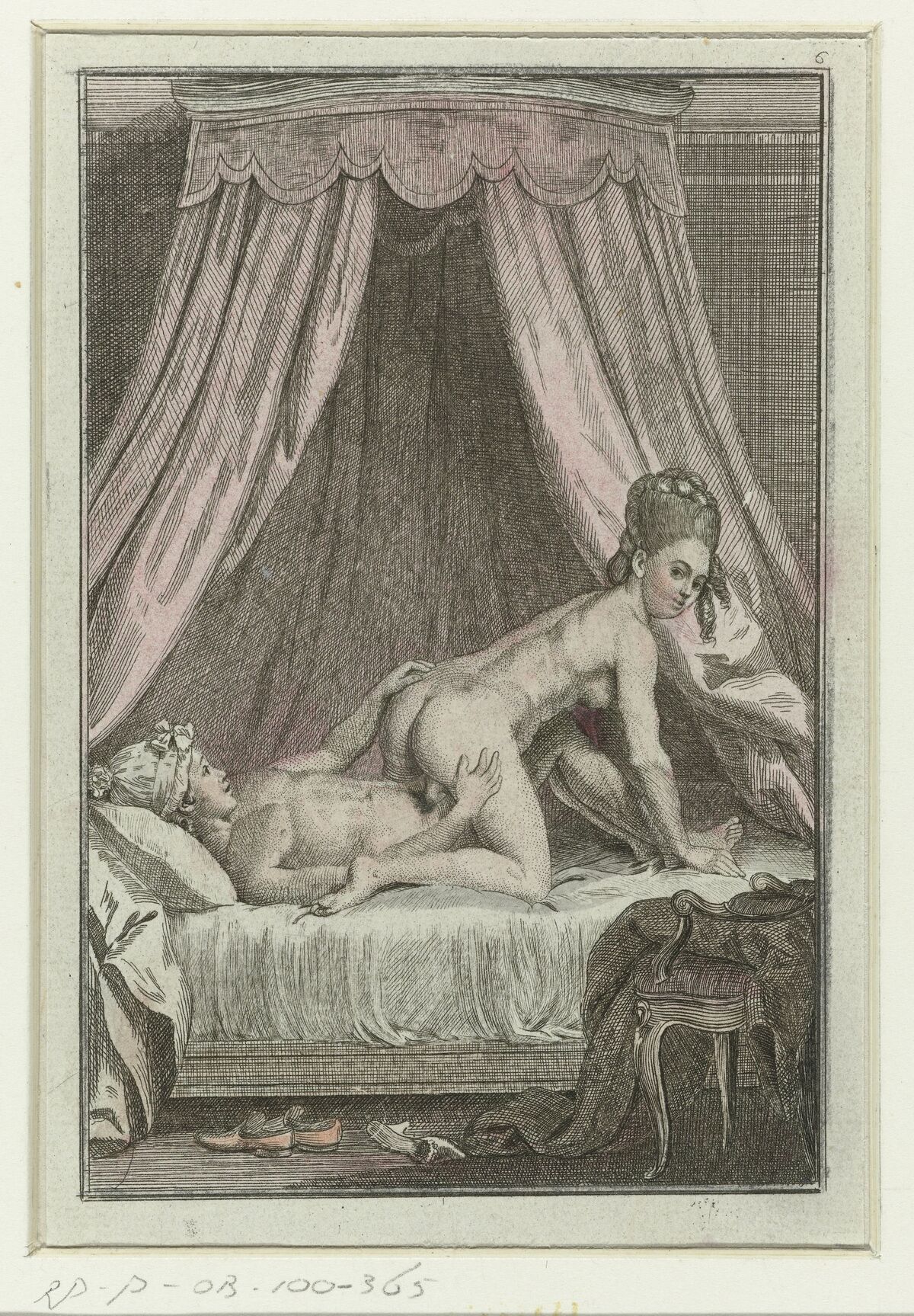
Anonymous, Erotic Series with Couples in Bed, ca. 1750–1800. Courtesy of the Rijksmuseum.
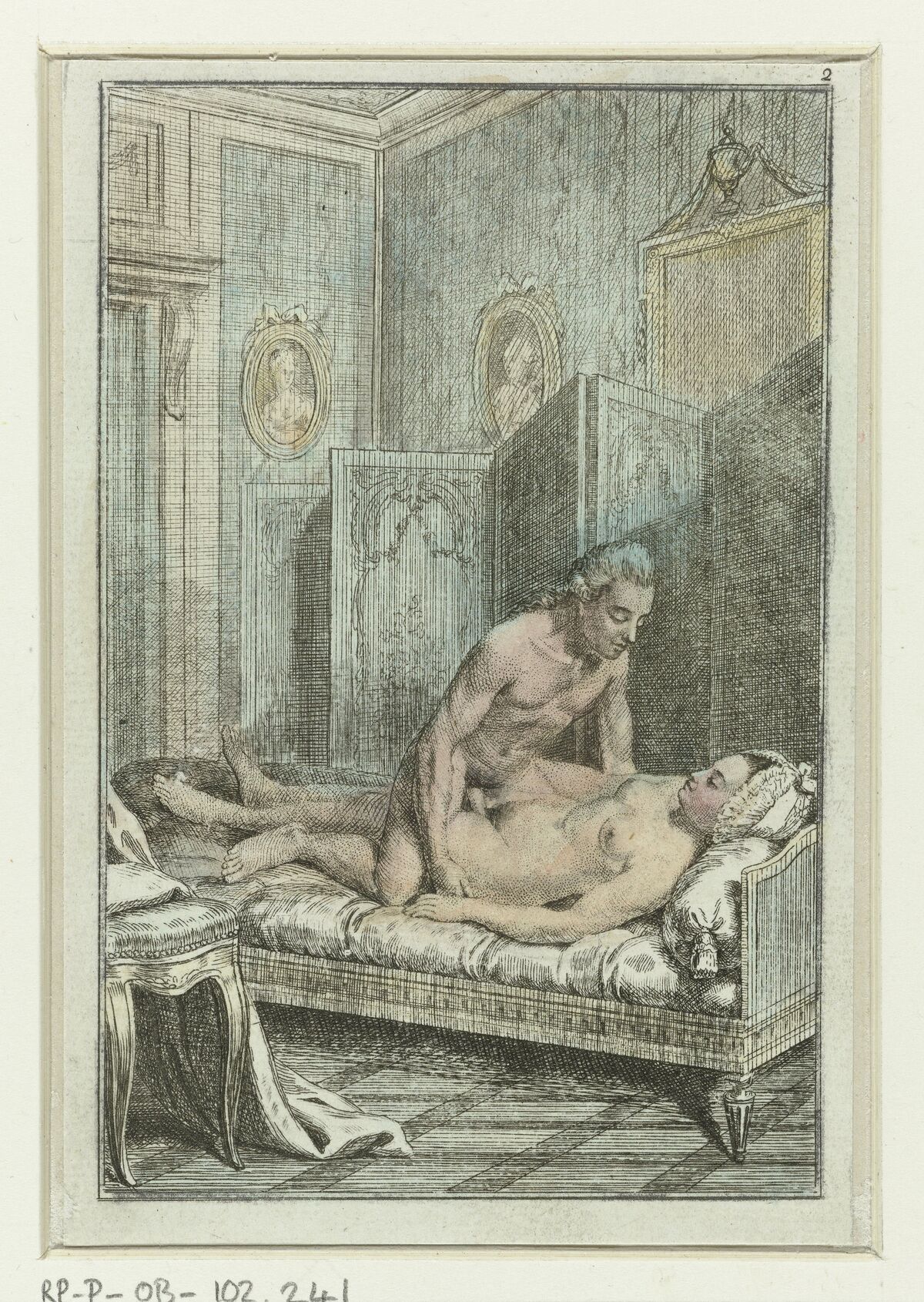
Anonymous, Erotic Series with Couples in Bed, ca. 1750–1800. Courtesy of the Rijksmuseum.Above all, female nudes were popular for their versatility: They “had a broad range of associations, from the sins of lust and pride to love, marriage, fertility, and a range of virtues,” writes Diane Wolfthal in The Renaissance Nude. The Valois courts of France and Burgundy had appetites for lusty figures, while in Italy and Northern Europe, painters depicted biblical ladies like Eve, Delilah, and Judith as temptresses and the cause of man’s downfall.Even though Catholic Church clerics commissioned erotic works for their own pleasure, they considered sex and nudity taboo in the dangerously shareable format of a print. When provocative illustrations began to circulate widely, the Church stepped in.

Thomas Rowlandson, A Woman exposes herself in a tent. Image via Wikimedia Commons.
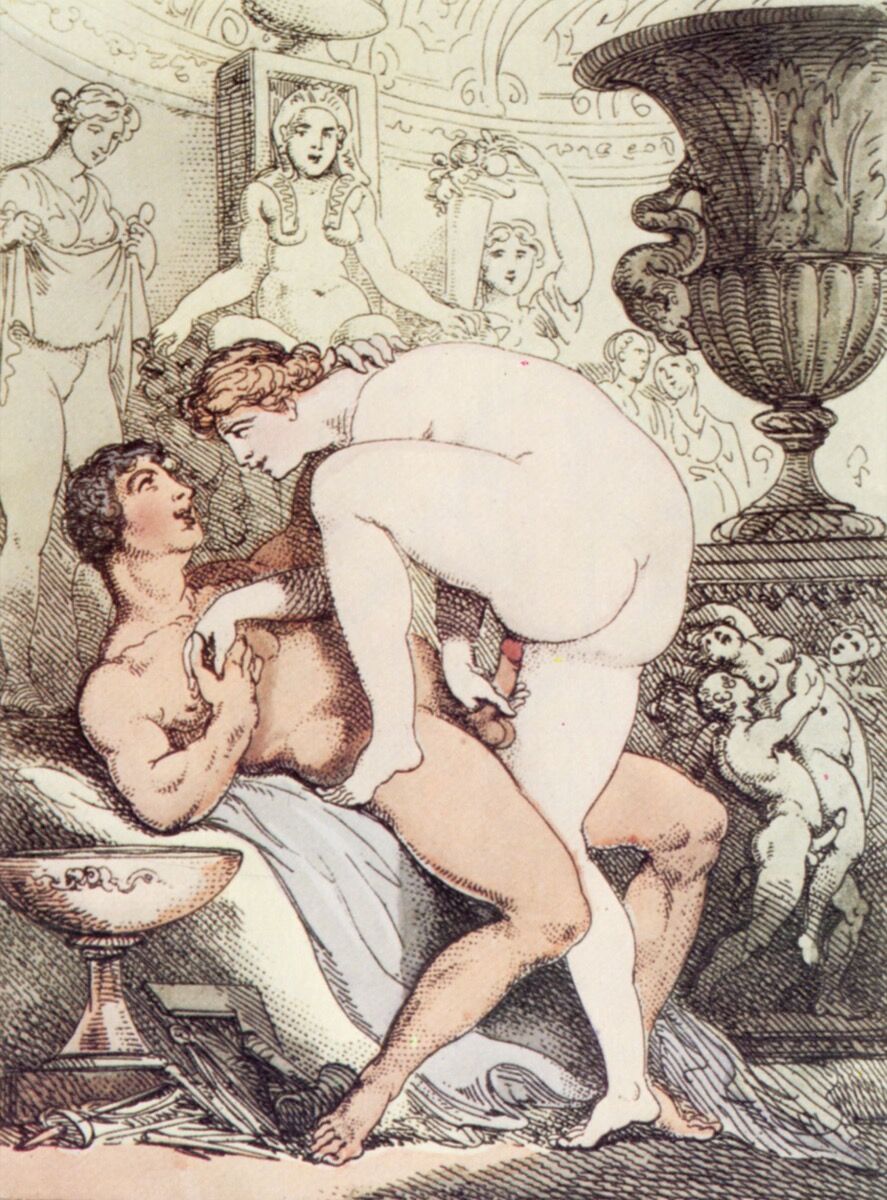
Thomas Rowlandson, Modern Pygmalion. Image via Wikimedia Commons.Raphael’s pupil Giulio Romano was known for outfitting the private rooms of the elite with titillating frescoes, including at Duke Federico II Gonzaga’s Palazzo Te in Mantua and the papal residences in the Vatican. Romano’s frescoes for the Vatican are credited as the inspiration behind the first mass-produced pornographic work. In 1524, Raphael’s master engraver Marcantonio Raimondi infamously copied Romano’s frescoes—which depicted 16 couples in different sex positions—and published it under the name I Modi, or “The Ways.” Marcantonio was temporarily imprisoned for his work on the project, and Pope Clement VII ordered the copies to be destroyed. (A few remaining fragments can be seen today at the British Museum in London.)The initiative backfired, and the Catholic Church became an early victim of the internet’s Streisand effect—when you try to censor something but wind up promoting it. Despite the Pope’s best efforts, I Modi continued to circulate. It even inspired a collection of lewd sonnets by poet Pietro Aretino, who released a second edition of I Modi with Marcantonio in 1527. In the introduction, Aretino offers an invitation to the reader: “Come view this you who like to fuck.”

Johann Wilhem Bergstrom, hand-colored daguerreotype, ca. 1844–54. Image via Wikimedia Commons.Erotic art and text often went hand in hand, but it took more than a century for the racy Libertine attitude that emerged in Enlightenment-era France to manifest in literature. One of the earliest and most popular pornographic books to be published was The School of Venus in 1680. The bawdy, illustrated sex manual became so notorious and sought-after that it was also translated to English. This seductive period in history is perhaps best embodied by the Marquis de Sade, who mixed cruelty and pleasure in his life and shocking prose. Despite the proliferation of erotic literature and imagery, when the first monthly porn journal, The Pearl, circulated around prudish Victorian England in 1879, it was shuttered for its obscenity after only a year.Until the advent of photography in the mid–19th century, prints reigned as the easiest medium to disseminate nudes. In 1839, French painter and printmaker Louis Daguerre introduced his miraculous invention: a copper sheet plated with silver that could be placed in a wooden box with a lens and come out bearing the exact likeness of the scene in front of it. Just two years later, William Henry Fox Talbot presented the calotype—photographic images that could be reproduced hundreds of times.
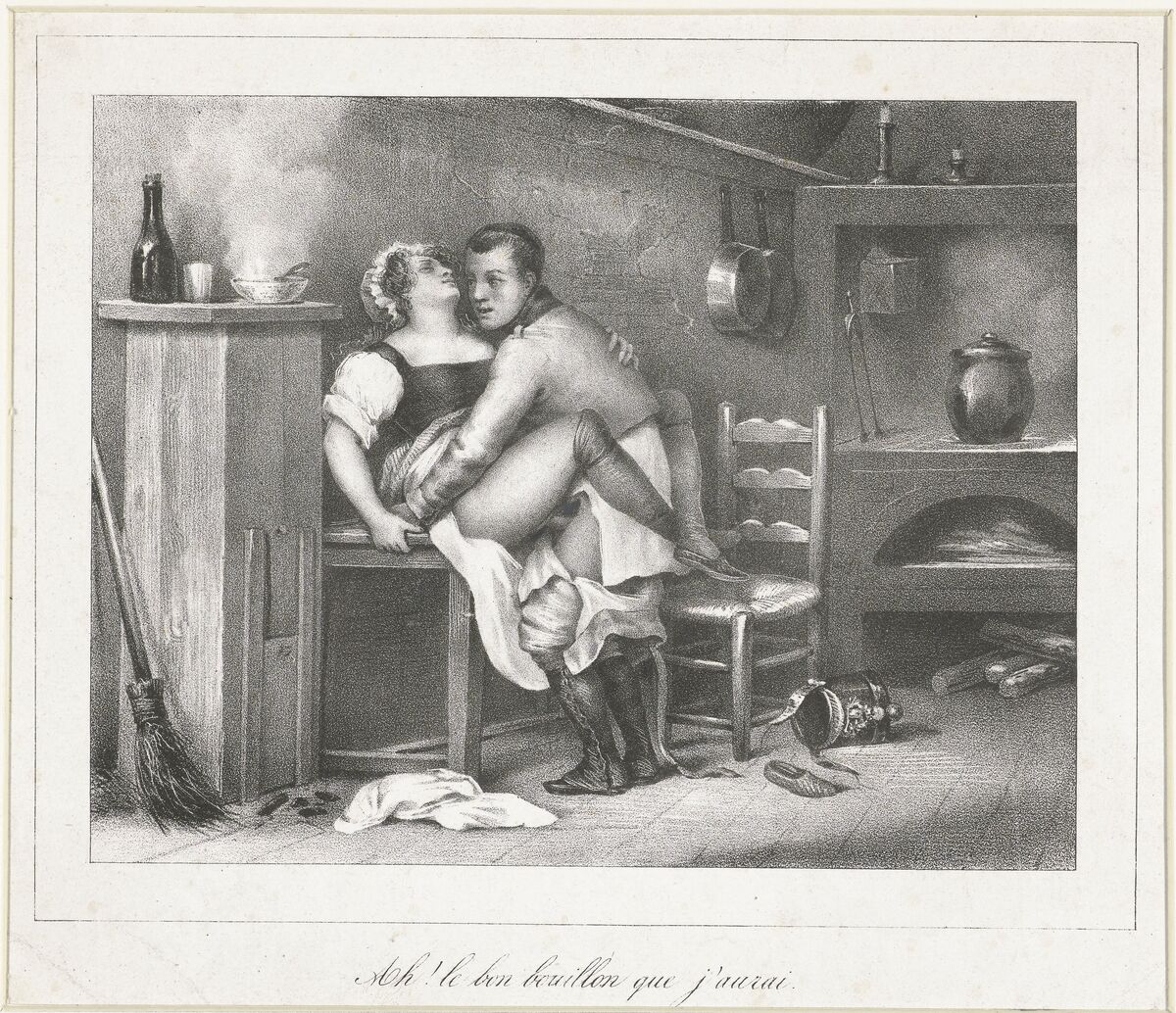
Anonymous, Soldaat vrijend met een keukenmeid (“Soldier making love with a kitchen maid”)ca. 1800–1900. Courtesy of the Rijksmuseum.As early as 1845, men were asking women to take their clothes off for the camera. A black market of suggestive and explicit photographs cropped up among Parisian art dealers, evading the French government’s registry or seizure. The modern era of pornography finally began to take shape—in black-and-white tableaus of bosoms and bare fannies. Jacqui Palumbo is a contributing writer for Artsy Editorial.Related StoriesThe Juiciest Gossip about the Renaissance MastersWhat Happened to the Catholic Church’s Art Patronage9 Types of Printmaking You Need to Know
Jacqui Palumbo

Leave a comment